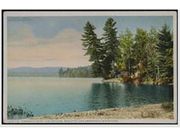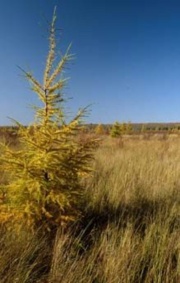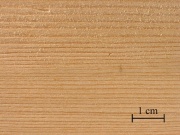Tamarack
Jump to navigation
Jump to search
Description
A general name for North American deciduous conifers, Larix laricina and Larix occidentalis, that are part of the Larch family. Tamarack trees grow in the northern parts of North America from Newfoundland to the Yukon. The trees most often occur in watery areas such as bogs. Tamaracks have strong, durable, close-grain wood that is used for construction, cabinetry, furniture, telephone poles, boats, millwork, paving materials, and railroad ties.
See also Larch, Eastern tamarack, and Western larch.
Synonyms and Related Terms
Larix laricina; Larix occidentalis; Ostamerikanische Lärche (Deut.); Tamarack Lärche (Deut.); Tamarack (Deut.); Amerikanische Lärche (Deut.); eastern tamarack; hackmatack; black larch; red larch; American larch
Physical and Chemical Properties
- Height = medium size tree (10-20 m) with trunks up to 60 cm
- Bark = light and flaky; can appear pink or red
- Leaves = green needles (2-3 cm) occur spirally along long shoots, then turn yellow in fall with only brown shoots remaining in winter
- Cones = small (1-2 cm) with red seed scales that turn brown when mature
- Density = 36-38 ppcf
Resources and Citations
- Wikipedia: https://en.wikipedia.org/wiki/Larix_laricina (Accessed October 12, 2020)
- G.S.Brady, Materials Handbook, McGraw-Hill Book Co., New York, 1971 Comment: p. 437
- F. H. Titmuss, Commercial Timbers of the World, The Technical Press Ltd., London, 1965 Comment: 20-30 pcf
- Dictionary of Building Preservation, Ward Bucher, ed., John Wiley & Sons, Inc., New York City, 1996
- Van Nostrand's Scientific Encyclopedia, Douglas M. Considine (ed.), Van Nostrand Reinhold, New York, 1976 Comment: 38 pcf
- Northern Pine Manufacturers: air-dry weight = 37 pcf
- Edward Reich, Carlton J. Siegler, Consumer Goods: How to Know and Use Them, American Book Company, New York City, 1937 Comment: 36-38 pcf


